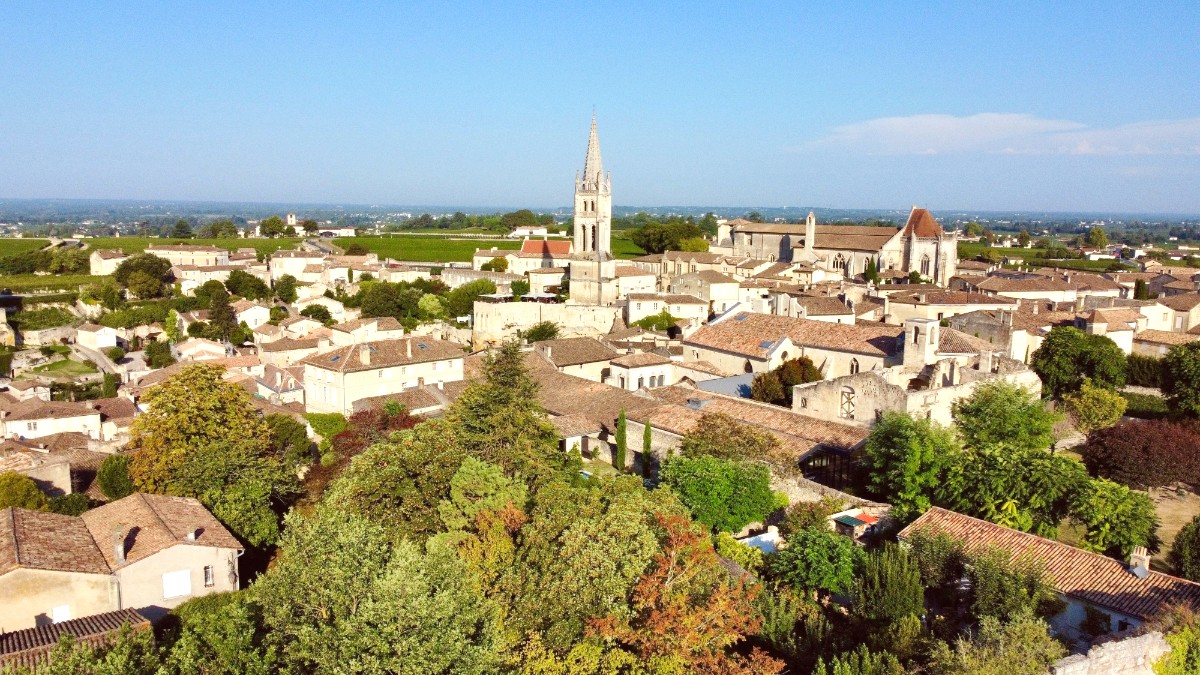
France
Arrive by train. Book a Monolithic Church tour and climb the Bell Tower. Enjoy lunch in the village. Wander streets, visit Les Cordeliers Cloister, and taste sparkling wine. Participate in a wine tasting at a village shop or accessible château. Have dinner before departing.
This intense itinerary provides a strong overview of the village's highlights.
These suggestions provide a framework for various visit durations, from a quick stop to an in-depth exploration.
Day 1: Arrive, check-in, explore the medieval village (Monolithic Church, Bell Tower, Collegiate Church). Day 2: Wine immersion. Rent electric bikes, cycle vineyards of Pomerol, pre-book château tour/tasting. Enjoy lunch. Visit a second, smaller winery or blending workshop. Day 3: Leisurely exploration, revisit favorites or depart.
Days 1-3: Weekend itinerary. Day 4: Day trip to Bordeaux (city center, Cité du Vin). Day 5: Coastal escape (Dune du Pilat, Arcachon Bay). Day 6: Médoc wine region tour (prestigious châteaux). Day 7: Regional exploration (Fronsac or Blaye Citadel), then depart.
For extended visits (a month or more), renting a `gîte` (vacation rental) in St-Emilion or a surrounding village offers a local immersion. Live like a local, explore at a slower pace, visit markets, and integrate into village life.
Expand upon the one-week itinerary. Add more time in Bordeaux for urban exploration, visit additional wine regions like Graves and Sauternes, and consider a multi-day extension into the stunning Dordogne Valley (famous for prehistoric caves, medieval castles, and picturesque villages like Sarlat). This allows for a more leisurely pace and a richer understanding of Southwestern France.
A quick guide to popular durations and their main focus.
Village highlights, Monolithic Church, quick wine tasting.
Deep village exploration, dedicated wine immersion, cycling.
St-Emilion focus, day trips to Bordeaux, coast, and Médoc.
Tailor your itinerary to specific interests, focusing on what you enjoy most.
Concentrate on guided tours of the monolithic church and the entire underground network. Climb the King's Keep. Explore the Collegiate Church and its cloister. Take a self-guided walking tour of the medieval village, paying attention to its ancient walls, gates, and unique architecture. Visit the small local museums dedicated to St-Emilion's past.
Include a cooking class focusing on regional French cuisine. Visit the St-Emilion market to sample local produce and artisan goods. Participate in food tours that combine walking with tastings of local specialties like macarons, cheeses, and charcuterie. Dine at a range of restaurants, from casual bistros offering traditional fare to fine dining establishments paired with local wines. Plan a picnic in the vineyards with locally sourced ingredients.
Focus on extensive cycling tours through the vineyards, perhaps combining them with vineyard walks. Consider a day trip to the Dune du Pilat for a challenging climb and stunning natural views. Explore the quieter vineyard paths for hiking and photography.
Explore the Romanesque and Gothic architecture of the Collegiate Church and the unique, carved nature of the monolithic church. Examine the medieval village layout and fortifications. Seek out local art galleries featuring regional artists and landscapes. Consider a day trip to Bordeaux for its impressive 18th-century architecture and art museums.
Choose guided tours that are suitable for children (check age suitability in advance). Explore the village with scavenger hunts or engaging stories about its history. Plan picnics and easy cycling routes (electric bikes can help with varying fitness levels). Look for wineries that offer family-friendly tours or activities, sometimes with grape juice tastings for younger visitors. Visit nearby parks or areas for outdoor play.
Spend quiet time contemplating in the historic churches and the unique atmosphere of the monolithic church. Enjoy peaceful walks through the vineyards, connecting with nature. Seek out accommodations that offer a tranquil environment, perhaps with garden access or a focus on relaxation. Consider simple meditations amidst the calming vineyard scenery.
St-Emilion accommodates various budgets with careful planning.
Stay in a Bordeaux hostel and take affordable train day trips to St-Emilion. Focus on free village exploration and public panoramic views. Prepare meals from supermarkets or local markets for budget-friendly picnics. Try basic wine tastings at the Maison du Vin or low-cost options from smaller producers.
Stay in a charming B&B or a mid-range hotel within or near St-Emilion. Enjoy a mix of guided tours, including the Monolithic Church. Participate in one or two private winery visits and tastings. Dine at local bistros and restaurants, utilizing lunch "Formule" menus.
Stay at a luxury château in the vineyards, indulging in its amenities. Arrange private transfers or chauffeured tours for seamless transportation between wineries. Book bespoke winery tours, including visits to prestigious Grand Cru Classé properties. Savor fine dining experiences at château restaurants or Michelin-starred establishments. Consider unique experiences like a hot air balloon ride over the vineyards.
Visit during the shoulder or low season for lower accommodation and flight prices. Always look for "Formule Midi" (set lunch menus) or "Plat du Jour" (dish of the day) at restaurants, as these offer excellent value. Prioritize walking and cycling for local transportation within and around the village. Utilize the St-Emilion market for fresh, affordable ingredients for picnics.
Align your visit with seasonal highlights for a truly memorable experience.
Always confirm opening hours for wineries, restaurants, and attractions in advance, especially outside of peak months. Many places may have reduced schedules or close entirely during the low season (mid-November to March).
Timing your visit with seasonal events or choosing off-peak periods can enrich your experience, offering distinct perspectives of St-Emilion's charm.